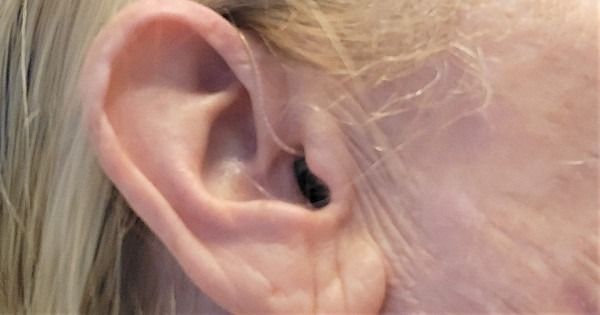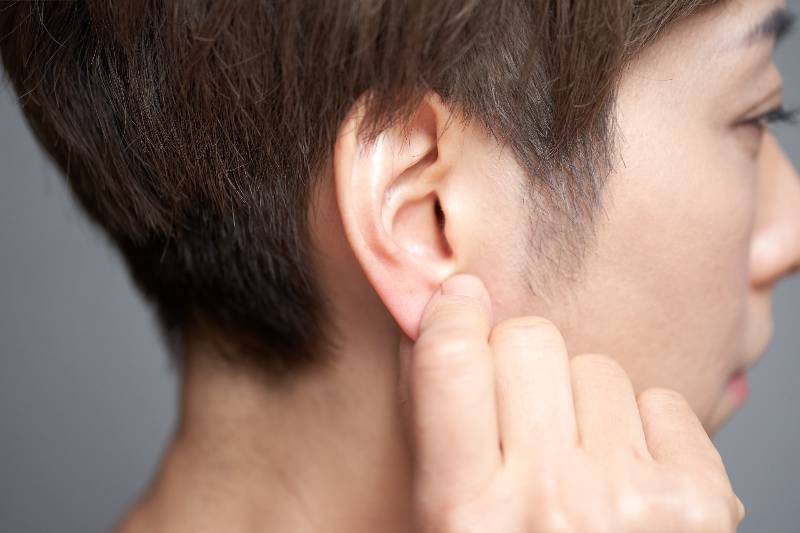Introduction
Otosclerosis, a condition that can lead to hearing loss, is not merely a medical term. It represents a labyrinth of life experiences that involve the personal, professional, social, and emotional aspects of individuals who navigate life with this condition. This blog aims to delve into these intricate aspects of living with otosclerosis, with a particular focus on seniors.
We will be exploring the impact of otosclerosis on professional life, understanding how it influences relationships, evaluating the quality of life for those with this condition, discussing the social implications, and providing a comprehensive overview of everyday challenges. In doing so, this post seeks to shed light on otosclerosis from an explanatory perspective, focusing on real-life scenarios and implications rather than clinical descriptions alone.
Each discussion aims to bridge the gap between medical understanding and everyday realities of living with otosclerosis, bringing to the forefront the experiences often left untold in medical literature. By giving attention to these often underrepresented facets of otosclerosis, we aim to contribute to a more inclusive and comprehensive understanding of the condition.
This exploration is especially important considering the increased prevalence of otosclerosis among seniors. Understanding their unique experiences can help tailor more effective support strategies, enhance empathetic understanding, and foster an environment of inclusivity and respect.
Impact of Otosclerosis on Professional Life
Navigating the professional world with otosclerosis can be challenging. Many seniors continue to engage in professional activities post-retirement, and otosclerosis can pose significant hurdles in this aspect of their lives.
Consider the case of James, a retired professor who continues to lecture at his local community center. His experience with otosclerosis started impacting his ability to interact with his students effectively. Not being able to hear their questions or comments well often led to misunderstandings. However, James chose not to let his condition overshadow his passion for teaching. He started using an FM system, which allowed his students’ voices to be directly streamed into his hearing aids, greatly enhancing communication during his lectures.
Then there’s Laura, a passionate artist who runs art workshops for seniors. With otosclerosis progressing, she started finding it difficult to hear her students’ feedback during classes. She decided to incorporate more visual feedback methods, like written notes and gestures, into her teaching style. This change not only improved communication in her classes but also added a unique element to her workshops, appreciated by all her students.
These instances highlight how otosclerosis can impact one’s professional life, but they also illuminate the innovative ways people find to continue doing what they love.
Lipo-Flavonoid Plus, Tinnitus Relief for Ringing Ears
Considered the most effective over-the-counter solution by ENTs, this product comes highly recommended by doctors for reducing ear ringing. Its effectiveness has been acknowledged and trusted by medical professionals in the field.
Please note that exposure to heat or sunlight may cause melting or damage to the product. To ensure the product’s integrity, customers are advised to be present during the delivery process.
Formulated with a natural lemon bioflavonoid complex, this product contains a rich blend of essential vitamins and nutrients such as Vitamins C, B1, B2, B6, B12, Calcium, Choline Bitartrate, Inositol, Niacin, and Pantothenic Acid. These ingredients provide vital nutritional support for the inner ear, making it beneficial for individuals with tinnitus and Meniere’s syndrome.
Otosclerosis and Relationships
Otosclerosis doesn’t only affect the person diagnosed with it; it also impacts their relationships. The inability to hear well can lead to communication gaps, which can strain personal relationships if not addressed appropriately.
Take, for instance, George, a 73-year-old man with otosclerosis. His declining hearing started to cause misunderstandings between him and his wife. Frustrations grew as communication became challenging. However, instead of letting their relationship suffer, George and his wife sought help from a speech-language pathologist. The therapy sessions equipped them with effective communication strategies, strengthening their bond and helping them navigate through the challenges posed by otosclerosis.
Then there is Martha, a 68-year-old grandmother. She started to feel disconnected from her grandchildren as her hearing worsened. The joyful noise of their playtime became faint, and she found it hard to follow their rapid conversations. Determined not to let her condition distance her from her loved ones, Martha decided to learn sign language along with her grandchildren. This became a fun bonding activity for them, and it allowed Martha to stay engaged and connected despite her hearing loss.
These narratives underscore the complex connection between otosclerosis and relationships, underlining the importance of adaptive communication strategies in maintaining the quality of relationships.
Assessing the Quality of Life in Otosclerosis Patients
Quality of life is a subjective measure, but for seniors with otosclerosis, several common factors can affect this. These include the degree of hearing loss, the effectiveness of treatment, the support system in place, and the individual’s attitude towards the condition.
For instance, Richard, a 72-year-old man with otosclerosis, started to feel his quality of life diminishing as his hearing loss became more severe. Social gatherings and family dinners, once his favorite activities, started to feel stressful and isolating. However, upon being fitted with a suitable hearing aid, his social interactions improved significantly, and he regained his enthusiasm for social events.
On the other hand, Susan, a 69-year-old woman, had a different experience. Even though her hearing loss was moderate, she felt her quality of life was significantly reduced due to the stigma associated with wearing a hearing aid. It took some time and counseling for her to accept the situation and start using a hearing aid. Eventually, she noticed an improvement in her overall quality of life as she could now engage in conversations and activities she had been avoiding.
These stories show that assessing the quality of life in otosclerosis patients isn’t straightforward. It requires considering a multitude of factors, including the individual’s personal perception and the societal attitudes towards hearing loss and its treatment.
Deafness: A Journey of Challenges and Triumphs
The Social Implications of Living with Otosclerosis
Living with otosclerosis has social implications that extend beyond communication difficulties. It can impact an individual’s self-esteem, social participation, and mental well-being.
Peter, a 76-year-old retired businessman, stopped attending his favorite book club meetings due to the progression of his otosclerosis. The inability to participate in discussions left him feeling isolated. However, Peter didn’t let this setback keep him away from his love for books. He started a new tradition – a digital book club where members could type their thoughts and opinions, allowing him to participate fully. His initiative not only helped him stay socially active but also catered to others who preferred written communication.
Mary, a 70-year-old, struggled with the stigma associated with hearing loss. She felt that her friends started treating her differently when her otosclerosis symptoms became evident. She decided to address the issue head-on, openly talking about her condition and educating her friends about otosclerosis. Her candid conversation helped break the ice and dispel misconceptions, making her social interactions more comfortable and genuine.
The social implications of otosclerosis can be significant, but as the stories of Peter and Mary show, there are ways to navigate these challenges and continue leading an active and fulfilling social life.
Otosclerosis and Everyday Challenges
Everyday life with otosclerosis can present a set of unique challenges. From struggling to hear the doorbell or phone ring to missing out on the soothing sounds of nature, the condition permeates all aspects of daily life.
Thomas, a 77-year-old gardening enthusiast, found it increasingly difficult to hear the sounds of his garden – the birds chirping, the rustle of the leaves, and the calming trickle of his garden fountain. To overcome this challenge, Thomas started focusing more on the visual and tactile aspects of his garden – the colors of the flowers, the texture of the leaves. His garden became a place of multisensory engagement, and he found joy in the new way he interacted with his beloved hobby.
Alice, a 75-year-old lady, had a different struggle. She had trouble hearing her phone ring, which led to missed calls and a feeling of disconnection. To tackle this, she set her phone to vibrate and used a flashing light alert for incoming calls. By using these simple strategies, she could stay connected without the fear of missing important calls.
These examples illustrate that everyday challenges due to otosclerosis are as diverse as the individuals experiencing them. Yet, they all underscore the resilience and adaptability individuals show in the face of such challenges.
Conclusion
Otosclerosis is more than a medical condition. It’s a part of individuals’ lives, shaping their experiences and interactions in unique ways. Understanding the full spectrum of these experiences is crucial in providing comprehensive care and support to seniors living with otosclerosis.
The impact of otosclerosis on professional life, as demonstrated through the experiences of James and Laura, revealed that creativity and adaptation can help individuals continue pursuing their passions despite the condition. The complex connection between otosclerosis and relationships, illustrated by George’s and Martha’s stories, highlighted the importance of communication strategies in maintaining healthy relationships.
Evaluating the quality of life in otosclerosis patients isn’t a straightforward process, as shown by Richard’s and Susan’s experiences. It involves considering personal perceptions, societal attitudes, and the effectiveness of treatment strategies. The stories of Peter and Mary illustrated the social implications of living with otosclerosis, showing us how important it is to maintain social connections and confront stigma associated with the condition.
Everyday challenges that come with otosclerosis, like those faced by Thomas and Alice, remind us that simple solutions can significantly improve daily living. They also underscore the resilience of individuals in adapting to new circumstances and finding joy despite the challenges.
In shedding light on these facets of living with otosclerosis, we hope to contribute to a more holistic understanding of the condition, fostering empathy and respect towards those navigating this journey.








